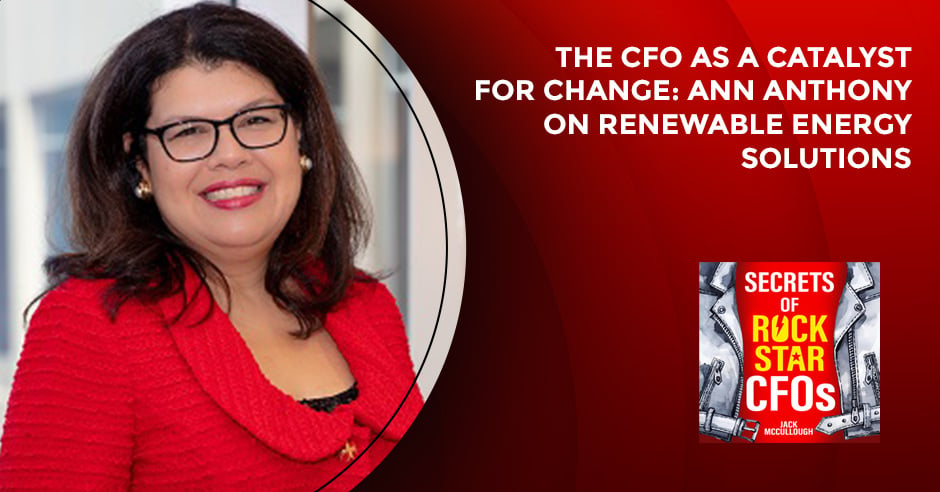Bankruptcy is a tough reset—and even tougher when it happens twice in less than a year. In August, Spirit Airlines made headlines by setting the record for the shortest time between bankruptcy filings. That’s a milestone no business wants to hit.
What went wrong? Spirit focused on treating the symptoms of financial distress without addressing the root causes behind it. The result: a return to square one.
But bankruptcy doesn’t have to be a revolving door. When done right, it can be the clean slate a company needs to rewrite its playbook. The key is getting back to fundamentals: shifting from preserving value to creating it, quickly. That starts with a mindset shift. The CFO needs to stop asking, “How do we survive?” and start asking, “How do we win?”
Here are the five ways the strongest finance leaders are doing it:
Reset the financial reporting framework.
A tidied balance sheet may look good, but it won’t win the long game. Post-bankruptcy, CFOs must do more than clean up; they must reset.

That reset begins with fresh-start reporting, which records assets and liabilities at fair value—a complex process that can overwhelm the accounting function. Strong CFOs navigate compliance while preserving accurate records and the integrity of financial systems. Done right, fresh-start reporting creates a transparent baseline and reassures stakeholders that the new company is ready for growth, rebuilding trust that may have eroded during distress.
It also requires CFOs to apply troubled debt restructuring or other change-of-control accounting carefully, so the financial statements accurately capture the impact of restructuring, reflect the company’s new capital structure and provide clarity for investors and regulators alike.
However, the financial reset isn’t just technical; it’s also operational. Think of it as rebooting the operating system, not just deleting corrupted files. That means:
- Separating pre- and post-emergence data for a clean line of sight.
- Restating balances to ensure comparability across reporting periods.
- Aligning and optimizing the ERP to match the company’s new structure.
- Guaranteeing a clean handoff in the general ledger, free of legacy noise.
Only after restarting the books in this disciplined way can CFOs begin rebuilding them, laying the financial foundation that supports long-term value creation, not just short-term survival.
Break old patterns at the root.
Bankruptcy cleans up the books, but it doesn’t address the behaviors that caused them to break. Post-emergence is a rare chance for CFOs to step back and ask: What really got us here, and how do we ensure it doesn’t happen again?

That means digging into the root causes of distress, which often include:
- Broken decision-making lines that stall agility and accountability and lead to bloated SG&A and overhead that siphon capital from growth.
- Weak internal controls and compliance gaps can lead to inaccurate results and financial misstatements.
- Ineffective budgeting, forecasting or reporting cycles that leave leadership flying blind.
- Vendor and supplier contracts that create costly, fragile supply chains.
The emergence window is an opportunity to reset—not just structurally, but also culturally. CFOs should eliminate legacy inefficiencies, repair sidelined processes, break down communication silos and reimagine a cross-functional and harmonious sales, operations and inventory planning (SIOP) design for resilience. In today’s world of labor shortages, inflation and geopolitical tension, a fragile supplier base can be just as fatal as toxic debt. Resilience, not just cost efficiency, must become the north star.
Build strong tech and data.
Emergence is also the moment to rethink technology from the ground up. Duct-taped systems and fragmented reporting may have been tolerated in distress; however, these systems are not scalable.
CFOs should be at the table in defining a future-proof tech stack—one where ERP, general ledger, operations planning, and analytics platforms connect seamlessly. Finance should play a central role in budgeting for tech spending and ensuring that every dollar is directly tied to strategic priorities.
The same is true for data. Too many post-bankruptcy companies operate without high-quality insights into performance drivers or cost trends. Building an analytics framework that is cross-functional but finance-led ensures that decision-making is based on visibility, not guesswork.
Strong data foundations also set the stage for AI—not as a shiny add-on, but as a tool that matters for predicting demand shifts, flagging supply chain disruptions, identifying red flags in financial performance and guiding capital deployment. The message to CFOs here: AI isn’t optional, but it’s only valuable if you establish sound fundamentals.
Stabilize and strengthen talent.
Distress periods often leave companies hollowed out: critical people gone, and survivors stretched thin. But a reset will not stick without the right people in the right seats.

CFOs should take a hard look at talent across both frontline and back-office functions. That means:
- Addressing critical finance gaps in areas like FP&A, treasury and controllership.
- Right-sizing functions so the company is built to scale, not just survive.
- Redesigning roles and reporting lines to speed up decision-making and accountability.
It’s not just about plugging holes; it’s about upgrading the bench. A post-emergence finance team should operate as a strategic business partner, not just a scorekeeper.
And CFOs shouldn’t try to be everything themselves. The real skill is knowing how to hire complementary strengths and build a team that elevates the whole organization. In other words, winning the war for talent is as strategic as winning the trust of your creditors.
Deploy capital with discipline.
Emergence usually comes with a rare advantage: fresh capital. But capital alone doesn’t create value; discipline does.
The most effective CFOs employ a rigorous allocation framework, ensuring that every dollar is tied to a measurable outcome. That means:
- Balancing near-term stability with long-term growth.
- Funding infrastructure investments, from tech and operations to talent, rather than just chasing shiny projects.
- Modeling ROI rigorously ensures that capital is deployed where it delivers outsized returns.
- Aligning spend with the company’s newly defined strategy and risk profile.
Fresh capital is fuel, but also a test. Used wisely, it can fund growth, restore confidence and give the “newco” a competitive edge. Used carelessly, it risks pulling the company back into old patterns.
Bankruptcy may feel like a scar, but in practice, it can be a driving force for change: to reboot the balance sheet, rebuild fragile supply chains, and restore the confidence of investors, employees, and customers alike.
Let Spirit Airlines be a cautionary tale. The companies that win won’t be the ones that simply “made it out.” They’ll be the ones whose CFOs used emergence as a reset to build resilience, agility and competitive edge.







